Yoda’s story is not an easy one, but luckily, it has at least a happy ending.
This poor dog has suffered so much throughout his life, almost giving up at one point, but just like the light at the end of a tunnel, his rescuers showed up to offer him a second chance.
Yoda was rescued by The Caremelo Institute – an organization working toward the rescue of injured and at-risk animals, their recovery, and finally adoption.
When Yoda was found on the street, he was in so much pain that he couldn’t even open his eyes.
Yoda, The Warrior
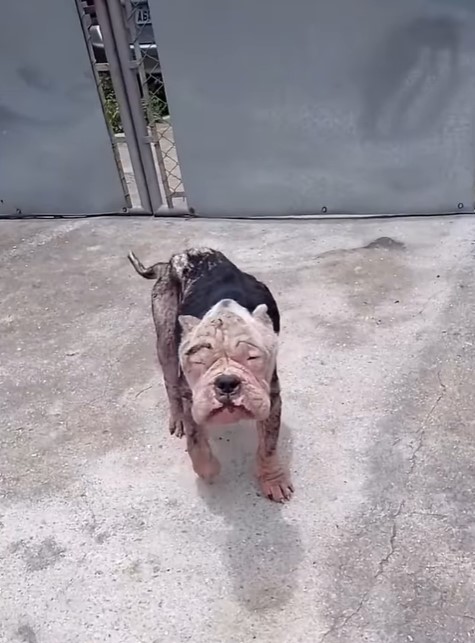
Yoda was found in horrible condition, causing him so much pain, yet when he was approached by his rescuers, he found the strength to wag his tail.
Deep down, he was desperate for a bit of love, despite the enormous pain.
With tears in their eyes, Yoda’s rescuers rushed him to the veterinary clinic, where he was diagnosed with sarcoptic mange, general alopecia, lethargy, and malnourishment.
He had a long and extensive journey to recovery ahead of him.
“Yoda won hearts the day he was rescued, and has since been undergoing intensive care for his recovery. Therapeutic baths, echocardiogram, ultrasound, exams, and pain management medication are part of your daily routine,” the rescue wrote in their Instagram post.
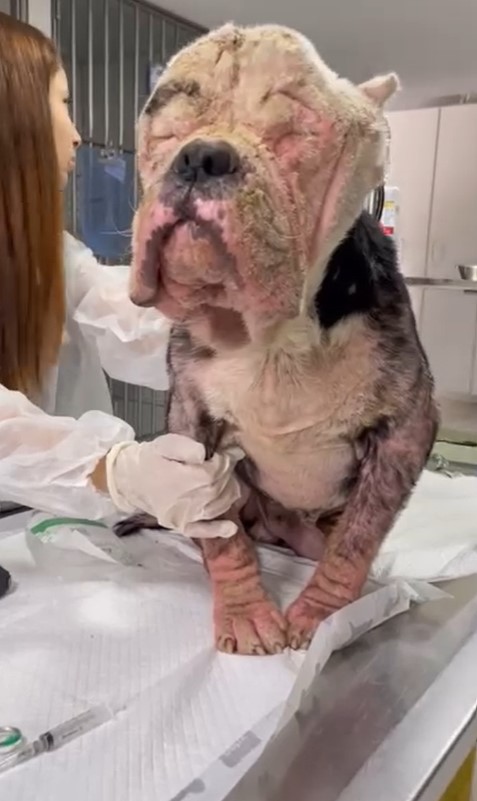
While Yoda was in a hospital receiving medical care, his story caught the eyes of one kind-hearted person who decided to become his godfather and pay for his care.
That same person would end up adopting Yoda upon his recovery.
“What made me want to adopt him was the moment of rescue. In the condition he was in, very thin, full of scabies, and with his eyes closed due to another illness, he got up and started wagging his tail at whoever was coming to take him off the street,” Mauro, Yoda’s dad, told Bored Panda.
With the help of many medications, Yoda slowly started feeling better. His skin condition improved so much, and he was finally able to open his beautiful eyes and see the new life waiting for him.
Yoda’s New Life
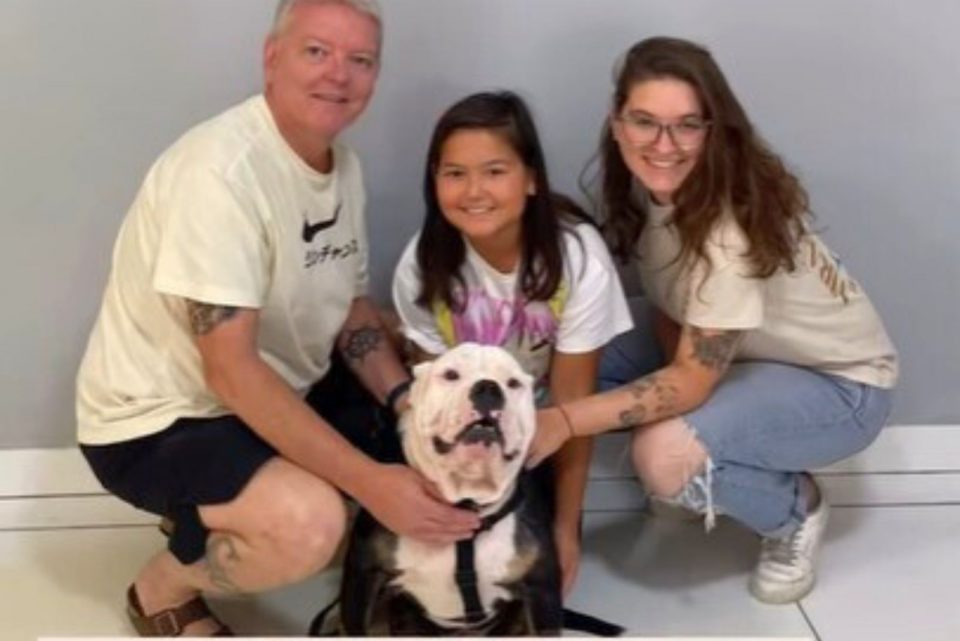
When Yoda was finally discharged from the hospital, he was also officially adopted by Mauro and his lovely family.
Mauro commented on the adoption process: “I wouldn’t say it was difficult, it was a professional selection process. I found it very appropriate, as it reduces the chance of returns and also of adoption due to impulsiveness and emotion.”
Yoda now lives with Mauro, his wife, Ana, their nine-year-old daughter, and two other dogs.
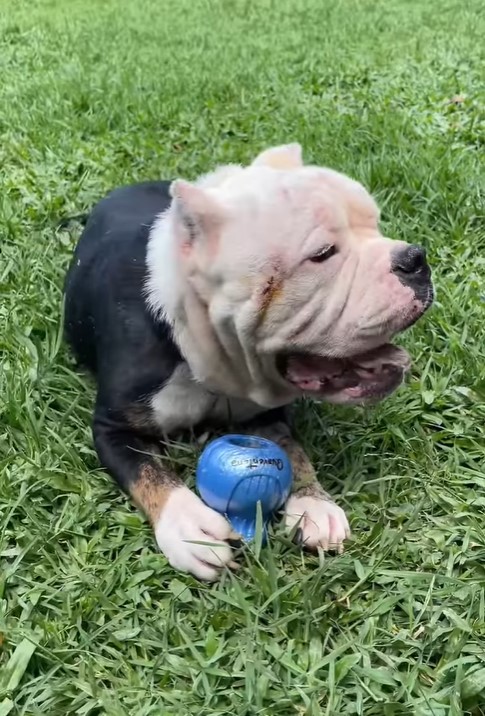
“We have an American bully like him, but female and they get along really well. We have a French bulldog, who is more jealous, but now they are even playing together,” Mauro said.
They are an experienced dog family who have always had dogs all their life, so they know exactly how to take care of one.
According to them, Yoda is super calm and docile and gets along with other dogs really well. He’s truly enjoying his new life – the old life full of desperation and pain hopefully being long forgotten.
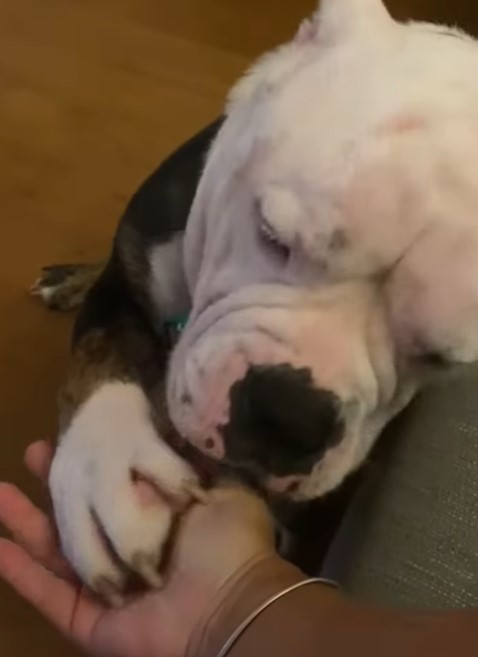
Yoda’s story is a true example of what a little bit of love and care can do because his transformation is incredible.
Hope you’ll have many more years of your fairy-tale ending, beautiful boy.
If you’ve ever walked into your home only to be greeted by the unmistakable scent of dog pee, you’re not alone. Dealing with a dog that’s peeing in the house can be frustrating and confusing. As a seasoned dog trainer, I’ve seen this issue crop up time and time again, leaving many pet owners scratching their heads.
When your furry friend starts using your floors as a bathroom, it’s essential to understand that there are various reasons why this behavior may be happening. From medical issues to behavioral problems, your dog’s indoor accidents could be trying to tell you something. So, before you start stressing out about the mess, let’s take a closer look at the possible reasons behind why your dog is choosing to pee inside.
Understanding the Reasons Behind Inappropriate Urination
Medical Issues That Can Cause House Soiling
If your dog is peeing inside the house, it could be due to underlying medical issues. Medical problems such as urinary tract infections, diabetes, kidney disease, or even cognitive dysfunction can lead to accidents indoors. It’s essential to rule out any health concerns by consulting your veterinarian. These issues can be effectively managed with proper diagnosis and treatment, helping your furry friend feel better and stop the inappropriate urination.
Behavioral Reasons for Indoor Peeing
Indoor peeing can also stem from behavioral issues in dogs. Factors like anxiety, territorial marking, lack of proper house training, or changes in their environment can trigger this behavior. Addressing these behavioral issues through positive reinforcement training, providing mental stimulation, maintaining a consistent routine, and ensuring a secure environment can help curb inappropriate urination. Understanding your dog’s behavior and addressing the root cause are crucial in correcting this unwanted habit.
Communication and Your Dog’s Urinary Habits
Communication plays a vital role in understanding your dog’s urinary habits. Pay attention to any changes in their behavior, such as frequent accidents, excessive drinking, or unusual patterns. These could indicate an underlying issue that needs to be addressed promptly. Establishing a clear communication channel with your pet, being observant of their cues, and maintaining a regular bathroom schedule can help prevent indoor accidents. By fostering good communication and a healthy routine, you can promote proper urinary habits in your canine companion.
Handling the Situation: First Steps
Rule Out Medical Problems
If your dog is suddenly peeing in the house, the first thing you should do is rule out any underlying medical issues. Schedule a visit to your veterinarian to check for conditions like urinary tract infections, diabetes, or kidney disease. These health problems can cause changes in your dog’s bathroom habits, leading to accidents indoors. Once medical concerns are ruled out, you can focus on behavioral solutions.
Observe Their Routine and Triggers
To tackle your dog’s indoor peeing, pay close attention to their routine and potential triggers. Notice when accidents happen and what was going on around that time. Is your dog anxious when left alone? Do they need more frequent potty breaks? Understanding their habits and what sets off accidents can guide you in preventing future mishaps. By creating a predictable routine and addressing triggers, you can help your dog develop better bathroom behavior.
Training and Reconditioning Your Dog
Establishing a Regular Bathroom Schedule
To prevent your dog from peeing in the house, it’s crucial to establish a regular bathroom schedule. Take your furry friend out for bathroom breaks at consistent times throughout the day, such as first thing in the morning, after meals, and before bedtime. By following a routine, you help your dog understand when it’s time to potty outside, reducing the likelihood of accidents indoors.
Positive Reinforcement Techniques
Using positive reinforcement techniques can be highly effective in training your dog to pee outside. When your dog goes potty in the designated outdoor spot, reward them with treats, praise, or playtime. Positive reinforcement helps your dog associate peeing outside with good things, encouraging them to repeat the behavior. Remember to be patient and consistent with rewards to reinforce the desired behavior.
Creating a Pee-Free Home Environment
To discourage indoor peeing, create a pee-free home environment for your dog. Clean up any accidents promptly and thoroughly to remove lingering odors that may attract your dog to the same spot. Consider using pet-safe cleaners to eliminate urine scents effectively. Additionally, provide easy access to the outdoors by keeping doors open or installing a doggie door, making it convenient for your dog to go outside when needed.
Professional Help and When to Seek It
When you notice your dog peeing in the house, and you’ve tried various solutions with no improvement, it might be time to seek professional help. Here are two key avenues to consider:
Consultation with a Veterinarian
If your dog’s indoor peeing persists despite your efforts, consulting a veterinarian is crucial. A vet can rule out underlying health issues like urinary tract infections or diabetes that could be causing this behavior. They can conduct tests to identify any medical conditions that might need treatment. It’s essential to rule out health problems before focusing solely on behavioral solutions.
Behavioral Therapy with an Animal Behaviorist
In cases where the indoor peeing is rooted in behavioral issues like anxiety or lack of training, working with an animal behaviorist can be beneficial. These professionals specialize in understanding animal behavior and can help address the root cause of your dog’s inappropriate peeing. Through personalized training plans and behavior modification techniques, an animal behaviorist can assist in resolving your dog’s indoor peeing problems effectively.
When you’ve exhausted your options and your dog’s indoor peeing continues, seeking help from a veterinarian or an animal behaviorist can provide tailored solutions to address the issue. Remember, each dog is unique, and what works for one may not work for another. By seeking professional help, you can better understand and correct your dog’s peeing behavior indoors.
Preventative Measures to Stop Recurrent Issues
Consistency is Key in Training
To prevent your dog from peeing indoors, consistency in training is crucial. Establish a routine for bathroom breaks, rewarding your dog for going outside. When accidents happen indoors, avoid punishment; instead, redirect your pet outside to reinforce the desired behavior.
Managing Your Dog’s Diet and Water Intake
Managing your dog’s diet and water intake can help control indoor peeing. Feed your dog at scheduled times to regulate bathroom habits. Monitor water consumption, especially before bedtime, and ensure regular bathroom breaks to reduce accidents.
Regular Exercise and Mental Stimulation
Regular exercise and mental stimulation are essential to prevent indoor peeing. Physical activity helps maintain your dog’s overall well-being and reduces anxiety-related behaviors. Engage your pet in interactive play and provide mental challenges to keep them mentally stimulated and less likely to pee indoors.
Conclusion
Now that you’ve learned about the various reasons why your dog might be peeing in the house, it’s essential to take action. Remember, consulting a vet is key to ruling out any underlying health issues. Behavioral adjustments and consistent training are vital in addressing this behavior. If the problem persists, seeking help from a professional, such as an animal behaviorist, can provide tailored solutions for your furry friend. By understanding your dog’s unique needs and implementing preventive measures, you can create a happier and healthier environment for both you and your pet.
Frequently Asked Questions
Why is my dog urinating indoors?
Dogs may urinate indoors due to medical issues or behavioral problems. It is essential to consult a veterinarian to rule out any health concerns and address behavioral issues through training and environmental modifications.
When should I seek professional help for my dog’s indoor peeing issues?
If your dog continues to urinate indoors despite efforts to address the problem, it is crucial to seek help from a veterinarian to identify underlying health issues. Working with an animal behaviorist can also help address behavioral issues such as anxiety or lack of training effectively.
What preventive measures can I take to stop my dog from urinating indoors repeatedly?
Consistency in training, managing your dog’s diet and water intake, providing regular exercise, and mental stimulation are key preventive measures. These actions help maintain your dog’s well-being, reduce anxiety-related behaviors, and discourage indoor peeing problems.
[no_toc]

Hey there, I’m Janet Brooks, a dog-loving student from California. I’m all about helping pups in need, especially those without homes. Me and my awesome friends work together to give shelter and love to stray dogs. Oh, and I also write blogs about dogs to share helpful info.